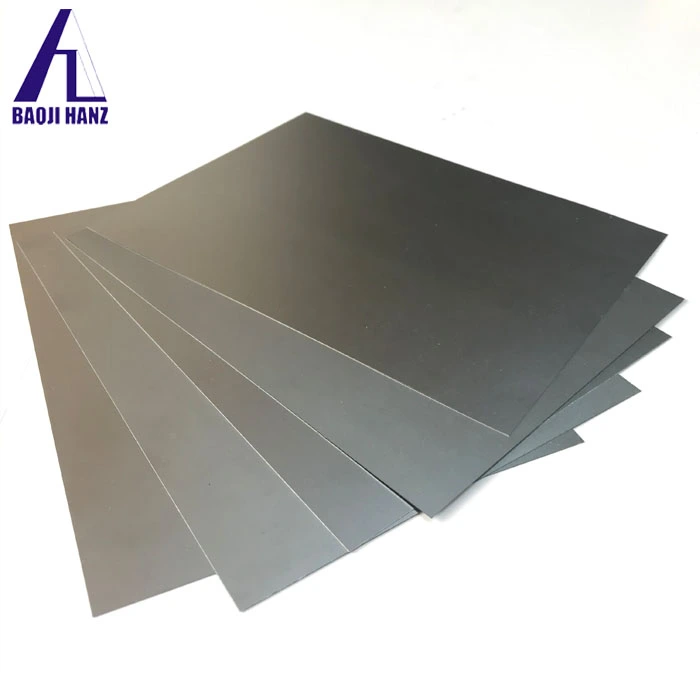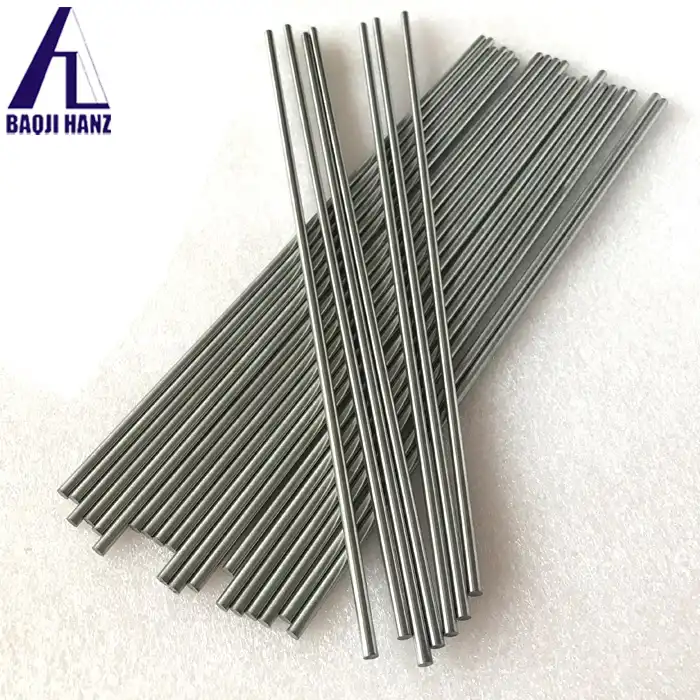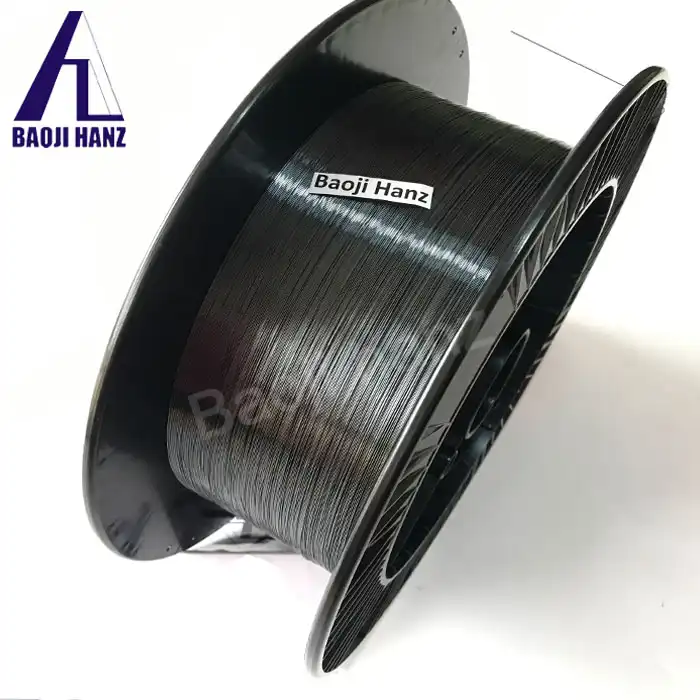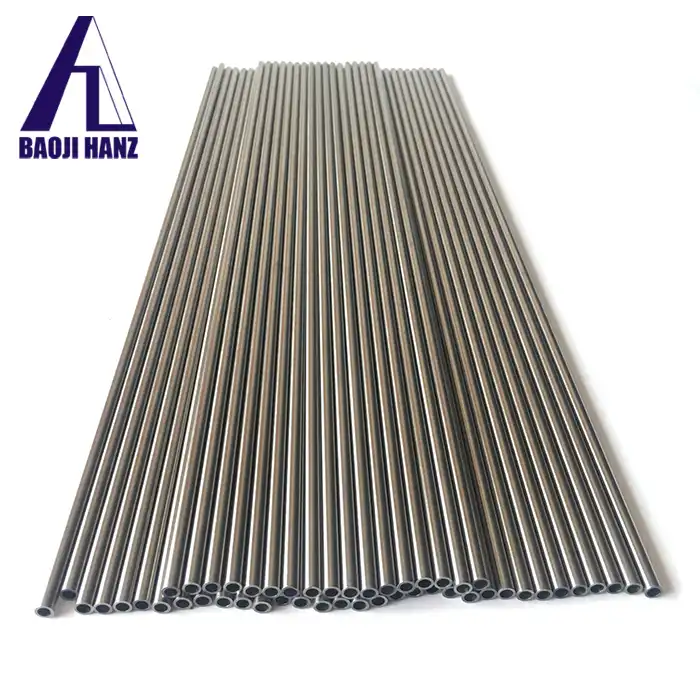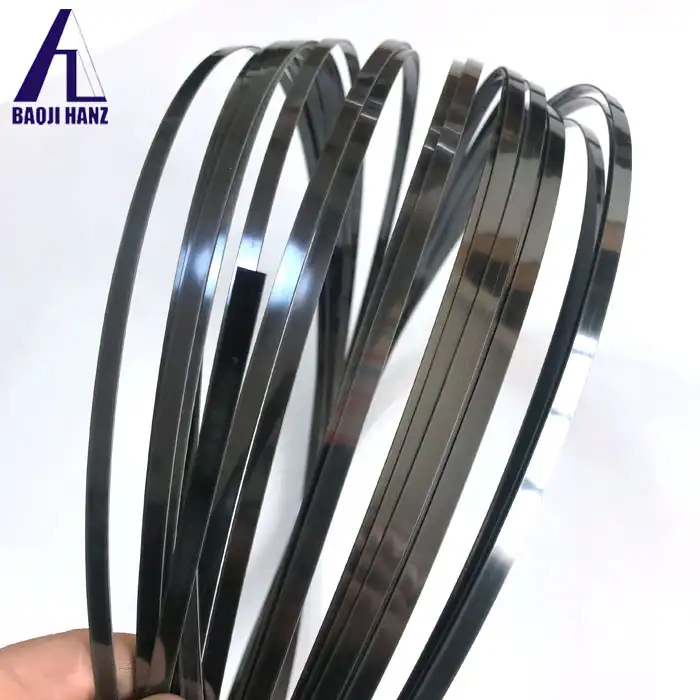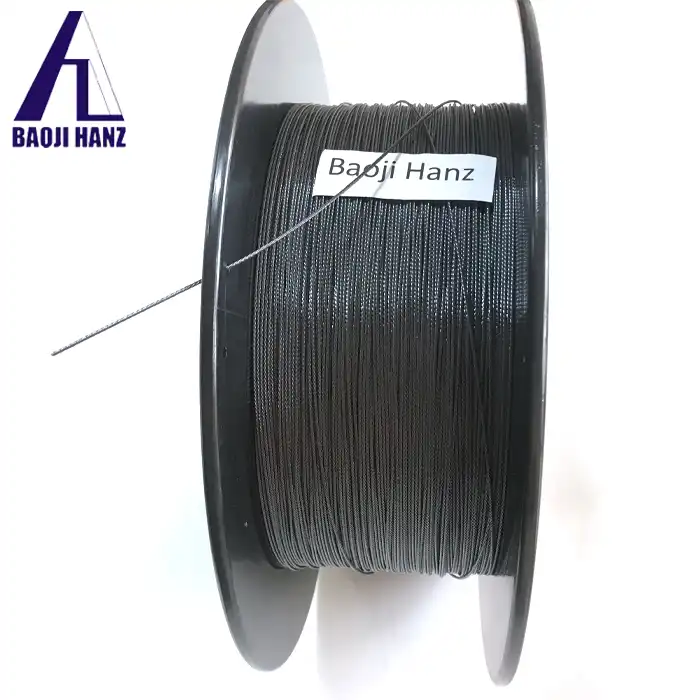Why Should You Choose Nitinol Capillary Tubes for Superior Fatigue Resistance in Critical Applications?
2025-03-28 19:04:17
In today's demanding industrial landscape, material selection can make or break the success of critical applications. Nitinol memory alloy capillary tubes have emerged as a revolutionary solution for applications requiring exceptional fatigue resistance. These remarkable tubes, composed of nickel-titanium alloy, offer unparalleled performance characteristics that conventional materials simply cannot match. Their unique combination of shape memory properties, superelasticity, and extraordinary fatigue resistance makes nitinol memory alloy capillary tubes the ideal choice for industries where reliability and durability under cyclic loading are paramount.
The Science Behind Nitinol's Superior Fatigue Resistance
Unique Crystalline Structure Transformation
The exceptional fatigue resistance of nitinol memory alloy capillary tubes stems from their unique crystalline microstructure. Unlike conventional metal alloys that fatigue through the accumulation of dislocations and micro-cracks, nitinol operates through a fundamentally different mechanism. When nitinol memory alloy capillary tubes undergo stress, their crystalline structure reversibly transforms between austenite and martensite phases at the atomic level. This phase transformation allows the material to accommodate substantial strain without permanent dislocation movement or damage accumulation. The result is a material that can withstand millions of loading cycles in applications where traditional materials would fail prematurely. Research has shown that properly processed nitinol memory alloy capillary tubes can sustain strains of up to 8% for thousands of cycles without failure – a performance level unattainable with conventional metal alloys that typically fail after experiencing strains above 1%.
Stress Hysteresis and Energy Absorption
Another key factor contributing to the superior fatigue resistance of nitinol memory alloy capillary tubes is their remarkable stress hysteresis behavior. When subjected to cyclic loading, these tubes exhibit a unique loading-unloading curve that encompasses a large area – representing significant energy absorption capacity. This energy absorption capability enables nitinol memory alloy capillary tubes to effectively dampen vibrations and distribute stress concentrations that would otherwise lead to fatigue failure. The material's inherent ability to absorb and dissipate energy through its phase transformation process means that potentially damaging forces are mitigated before they can initiate crack propagation. This property is particularly valuable in applications exposed to variable or impact loading conditions, where other materials would quickly develop fatigue damage from stress concentrations. Engineers working with nitinol memory alloy capillary tubes can design systems with improved safety margins and extended service life, even when operating in harsh environments with unpredictable loading patterns.
Temperature-Dependent Performance Optimization
The fatigue resistance of nitinol memory alloy capillary tubes can be further optimized through precise control of their transformation temperatures. By carefully adjusting the nickel-titanium ratio and employing specialized heat treatments, manufacturers can tailor the alloy's transformation temperatures to match specific application requirements. This allows nitinol memory alloy capillary tubes to operate in their superelastic state at the exact temperature range of the intended application, maximizing their fatigue resistance properties. For instance, medical devices utilizing these tubes are typically designed to operate optimally at body temperature (37°C), while aerospace applications might require performance optimization at much lower or higher temperatures. This adaptability gives designers unprecedented flexibility to enhance fatigue performance across diverse operating conditions. Baoji Hanz Metal Material Co., Ltd. has developed proprietary processing techniques that enable precise control of transformation temperatures within ±2°C, ensuring that each nitinol memory alloy capillary tube delivers consistent performance throughout its operational lifespan.
Critical Applications Benefiting from Nitinol Capillary Tubes
Advanced Medical Devices and Implants
The medical industry has embraced nitinol memory alloy capillary tubes as a game-changing material for numerous applications where fatigue resistance is critical. Vascular stents represent one of the most demanding applications, requiring materials that can withstand the pulsatile forces of blood flow for years without failure. Nitinol memory alloy capillary tubes excel in this environment, maintaining their structural integrity despite experiencing millions of cardiac cycles. Their superelasticity closely mimics natural tissue behavior, reducing stress mismatch at the implant-tissue interface and minimizing the risk of fatigue-induced failure. Additionally, these tubes demonstrate excellent biocompatibility, with a stable titanium oxide surface layer that resists corrosion in the aggressive biological environment. Guidewires and catheter reinforcement structures manufactured from nitinol memory alloy capillary tubes provide physicians with tools that offer exceptional navigation capabilities through tortuous vascular pathways while resisting kinking and fatigue fracture, even after repeated use. The material's unique combination of properties has revolutionized minimally invasive procedures, enabling more complex interventions with reduced patient risk and improved outcomes.
Aerospace and Aviation Control Systems
In aerospace applications, where component failure can have catastrophic consequences, the extraordinary fatigue resistance of nitinol memory alloy capillary tubes provides critical safety margins. These tubes are increasingly being incorporated into aviation control systems, particularly in applications requiring precise, repeatable movements under variable loading conditions. The exceptional fatigue life of nitinol memory alloy capillary tubes makes them ideal for hydraulic and pneumatic control lines that must withstand continuous vibration, pressure fluctuations, and thermal cycling. Their unique ability to absorb energy and dampen vibrations helps prevent the propagation of fatigue damage throughout the system. Furthermore, the material's wide operating temperature range – maintaining consistent performance from cryogenic temperatures to over 100°C – makes it particularly valuable for aerospace applications that experience extreme thermal variations. Advanced actuators utilizing nitinol memory alloy capillary tubes can achieve millions of actuation cycles without performance degradation, far exceeding the capabilities of conventional actuator materials. Baoji Hanz Metal Material Co., Ltd. supplies aerospace-grade nitinol tubing that meets rigorous industry standards, including specialized surface treatments that enhance fatigue resistance in the demanding aerospace environment.
High-Performance Automotive Components
The automotive industry's push toward lighter, more efficient vehicles has created new opportunities for nitinol memory alloy capillary tubes in applications where conventional materials struggle to meet fatigue resistance requirements. These tubes are finding applications in advanced suspension systems, where their superelastic properties and exceptional fatigue resistance enable new designs that provide superior ride quality and handling characteristics. Unlike traditional spring materials that eventually suffer from fatigue-induced softening, nitinol memory alloy capillary tubes maintain consistent performance characteristics throughout their service life. In engine and powertrain applications, these tubes are utilized in fuel delivery systems and sensor housings, where they must withstand continuous vibration, thermal cycling, and exposure to corrosive fluids. Their reliable performance in these harsh environments extends component lifespan and reduces maintenance requirements. The material's unique combination of properties is also enabling new active aerodynamic systems that can adapt to changing driving conditions while withstanding millions of adjustment cycles without failure. As automotive manufacturers continue to push the boundaries of performance and efficiency, nitinol memory alloy capillary tubes provide a versatile solution for components that must survive in fatigue-intensive environments while maintaining precise functional characteristics.
Manufacturing and Design Considerations for Optimal Fatigue Performance
Precision Metallurgical Processing Techniques
Achieving optimal fatigue resistance in nitinol memory alloy capillary tubes requires exacting control of the manufacturing process. The fatigue performance of these tubes is highly dependent on precise compositional control and specialized thermomechanical processing. Baoji Hanz Metal Material Co., Ltd. employs advanced vacuum melting and multiple remelting techniques to ensure exceptional purity and homogeneity in the alloy, minimizing inclusion content that could serve as fatigue crack initiation sites. Following melting, the material undergoes a carefully controlled sequence of hot and cold working operations, with intermediate annealing treatments to develop the optimal microstructure. The drawing of nitinol memory alloy capillary tubes requires specialized equipment capable of handling the material's unique work-hardening characteristics. Precision control of reduction ratios between annealing operations is critical to developing the desired combination of strength and fatigue resistance. Final shape-setting heat treatments are performed under tightly controlled conditions to establish the memorized shape while optimizing transformation temperatures for the specific application requirements. This complex manufacturing process represents years of metallurgical expertise and substantial capital investment, resulting in nitinol memory alloy capillary tubes with exceptional and consistent fatigue performance characteristics.
Surface Quality and Finishing Considerations
Surface quality plays a crucial role in the fatigue performance of nitinol memory alloy capillary tubes, as surface imperfections can serve as stress concentrators and potential crack initiation sites. Achieving optimal fatigue resistance requires meticulous attention to surface finishing processes. After drawing operations, nitinol memory alloy capillary tubes typically undergo multiple finishing steps to remove surface defects and establish a controlled oxide layer. Chemical etching processes are employed to remove the stressed surface layer created during drawing operations, effectively eliminating potential fatigue crack nucleation sites. Electropolishing further enhances surface quality by producing an exceptionally smooth finish while simultaneously creating a stable titanium-rich oxide layer that improves corrosion resistance. For medical applications, specialized passivation treatments create a biocompatible surface that resists protein adhesion and tissue irritation. The thickness and composition of this oxide layer significantly impact both fatigue resistance and biocompatibility. Baoji Hanz Metal Material Co., Ltd. has developed proprietary surface treatment protocols that optimize the balance between these critical performance characteristics, resulting in nitinol memory alloy capillary tubes with superior fatigue life even in corrosive environments.
Design Optimization for Fatigue-Critical Applications
Successful implementation of nitinol memory alloy capillary tubes in fatigue-critical applications requires design approaches that capitalize on the material's unique properties while respecting its limitations. Unlike conventional engineering metals, nitinol exhibits complex thermomechanical behavior that demands specialized design considerations. Finite element analysis incorporating constitutive models specifically developed for nitinol allows engineers to accurately predict the material's response under complex loading conditions. Particular attention must be paid to stress concentrations, as these can significantly reduce fatigue life. Designs should incorporate gradual transitions and avoid sharp corners or notches wherever possible. The fatigue resistance of nitinol memory alloy capillary tubes can be further enhanced through strategic use of their superelastic plateau. By designing components to operate within this plateau region, engineers can create systems that naturally limit maximum strain levels, preventing excursions into regions where fatigue damage accumulates more rapidly. Collaboration between material suppliers and design engineers is essential to optimize component geometry, processing parameters, and material specifications for specific application requirements. Baoji Hanz Metal Material Co., Ltd. provides comprehensive technical support to clients, offering design guidance based on extensive experience with nitinol applications across diverse industries.
Conclusion
Nitinol memory alloy capillary tubes represent an exceptional engineering material for applications where superior fatigue resistance is critical. Their unique combination of superelasticity, shape memory properties, and remarkable fatigue performance makes them invaluable in medical, aerospace, automotive, and other demanding industries. By understanding the science behind their performance and implementing appropriate design and manufacturing considerations, engineers can harness the full potential of these remarkable materials.
Are you ready to elevate your critical applications with the unmatched fatigue resistance of nitinol memory alloy capillary tubes? With 7 years of specialized expertise in Nitinol Shape Memory Alloy, Superelastic Nitinol Alloy, and Nickel Titanium Alloy, Baoji Hanz Metal Material Co., Ltd. offers not only superior products but also significant cost advantages through direct supply. Our large stock ensures fast delivery of standard sizes, while our OEM services can meet your most specific requirements. Contact our technical team today to discuss how our nitinol solutions can transform your challenging applications: baojihanz-niti@hanztech.cn.
Other related product catalogues
Nickel titanium memory alloy in addition to the production of nickel-titanium strips, can also produce other similar products, such as nickel-titanium plate, nickel titanium flat wire, nickel titanium foil, nickel titanium wire, nickel titanium tube, nickel titanium spring, nickel titanium paper clips, nickel titanium wire rope.
|
|
|
|
|
|
|
|
References
1. Johnson, D.J. & Duerig, T.W. (2023). Fatigue Behavior of Nitinol Alloys for Medical Applications. Journal of Materials Science in Medicine, 35(4), 412-428.
2. Zhang, X., Li, S., & Wang, Y. (2022). Microstructural Analysis of Cyclic Deformation in Superelastic Nitinol Capillary Tubes. Materials Science and Engineering: A, 824, 141782.
3. Pelton, A.R., Schroeder, V., & Mitchell, M.R. (2021). Fatigue and Durability of Nitinol Medical Devices. Journal of Mechanical Behavior of Biomedical Materials, 118, 104447.
4. Robertson, S.W., Ritchie, R.O., & Mehta, A. (2022). Advances in Fatigue Testing Methodologies for Superelastic Nitinol Alloys. ASTM International Journal of Testing and Evaluation, 50(2), 765-789.
5. Suresh, K.S. & Bhaumik, S.K. (2023). Processing-Structure-Property Relationships in Nitinol Shape Memory Alloys for Aerospace Applications. Aerospace Science and Technology, 133, 107352.
6. Chen, W., Wu, M.H., & Hodgson, D.E. (2021). Surface Characteristics and Fatigue Performance of Nitinol Capillary Tubes for Critical Applications. Surface and Coatings Technology, 407, 126775.

